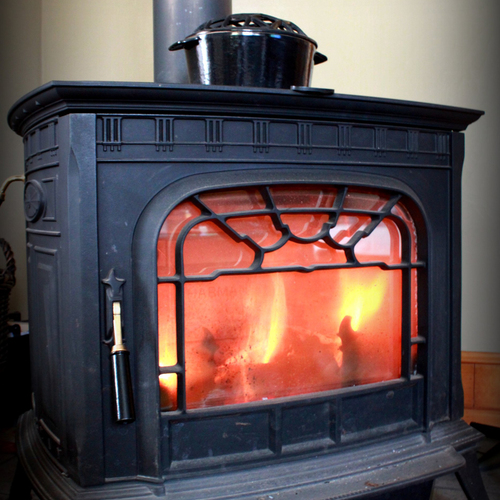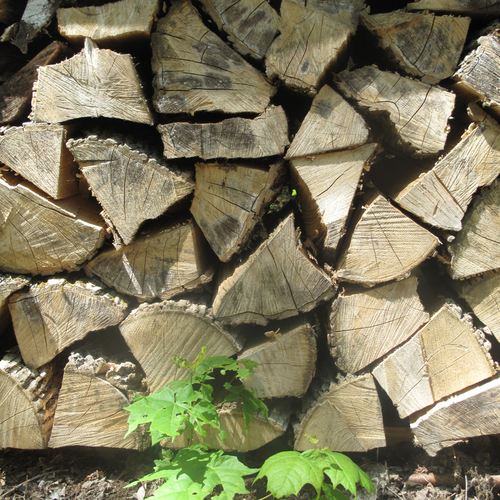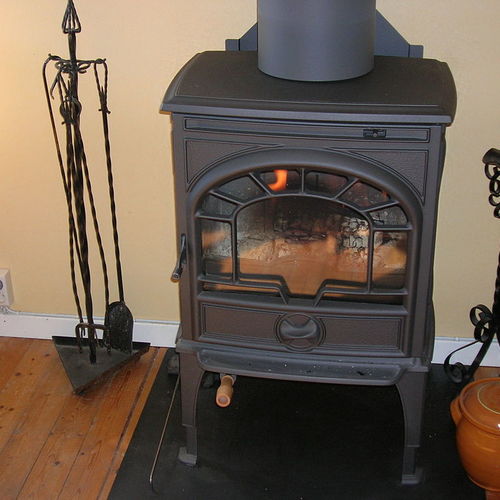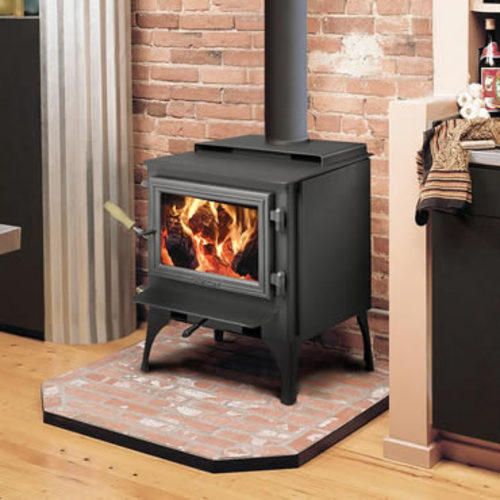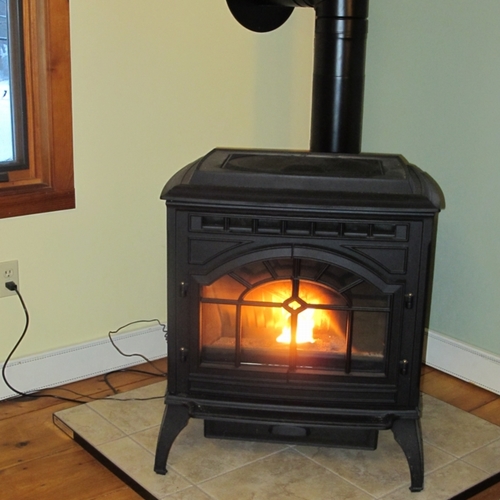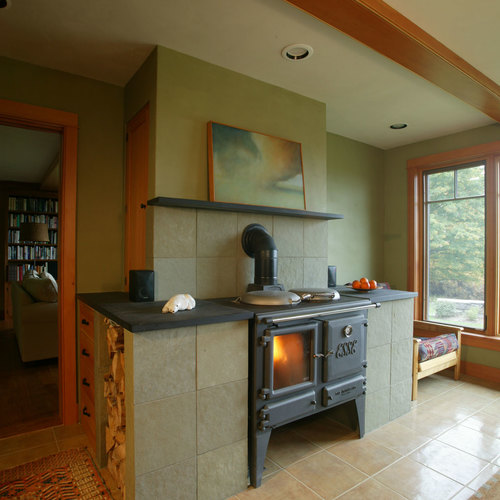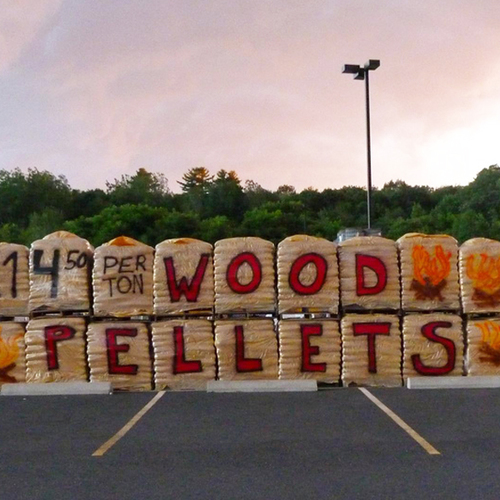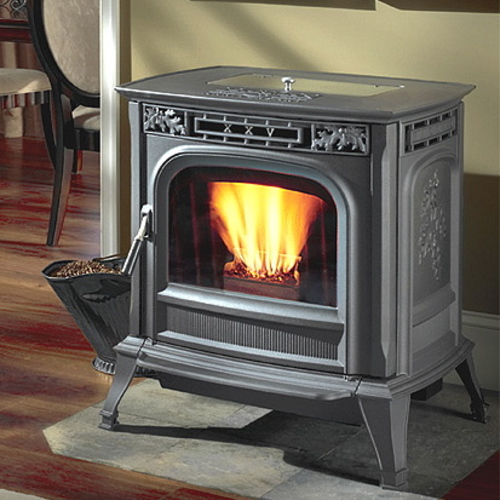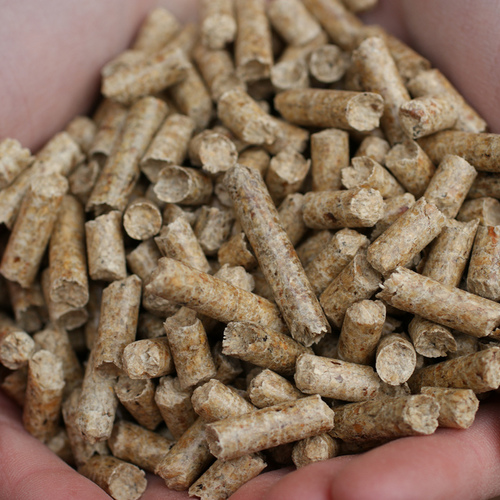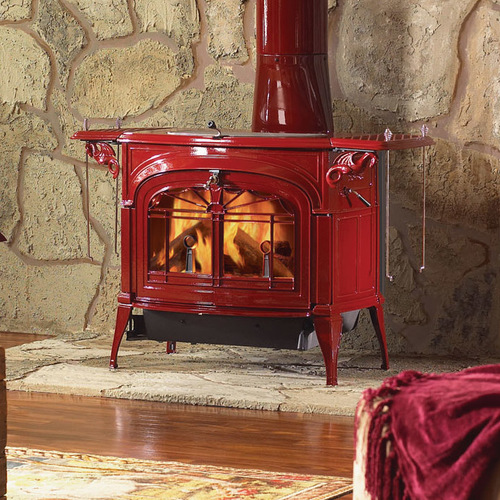
This is a list of the most important GBA articles on wood stoves, pellet stoves, and outdoor wood-fired boilers.
If you are looking for an index that spans all categories, with a special focus on “how to” articles, check out this resource page: “How to do Everything.”
-
All About Wood Stoves
If you’ve been heating your house with wood for years, you probably don’t need to read this article. By now, you know all about the disadvantages and inconveniences that accompany wood heat, and yet you still heat with wood — either because you genuinely love wood heat, or because you love the low cost of the fuel. If you haven’t burned down your house by now, you may even have figured out how to install and operate your stove safely. This article is addressed to a different audience: those who are thinking about buying their first wood stove.
-
Should Green Homes Burn Wood?
Environmentalists often argue over the wisdom of heating homes with wood. Strong arguments can be marshaled on both sides of this debate, so I’ll do my best to represent both positions before summing up.
-
Choosing a New Wood Stove
Patricia Appelbaum is in the market for a new wood-burning stove, one without a catalytic element, to provide mostly supplemental heat for her 1,600-square-foot home. There are a lot of models to choose from, and that's part of the problem.
-
Heating With Wood
In the 27 years that I’ve owned my house in West Dummerston, Vermont, I’ve always used wood heat to some extent. But my commitment to it has ebbed and flowed. For about the first 15 years, I heated the house almost exclusively with wood. Built in 1785, the house had electric heat when I bought it, but with my work focused on energy efficiency and alternative energy sources, I couldn’t bring myself to use electricity for heating, because so much energy is wasted during power generation.
-
Wood Stoves: Safety First
Nobody speaks of this contest but everybody knows who’s winning. It’s how we get out the competitive impulse in rural Vermont: we race to have the neatest woodpile. Admit it: even as you’re reading this, saying “that’s not me,” you’re mentally comparing your woodpile with the neighbor’s.
-
Heating With Wood Pellets
My wife and I have a sort-of love-hate relationship with our pellet stove. She leans more toward the latter, while I see the benefits outweighing the negatives. In this column I’ll outline the primary advantages and disadvantages of pellet heating.
-
Local Food, Local Wood
I picked up my weekly box of locally grown organic food today — not exactly a farm co-op, commonly knows as a CSA, but a small, farm-based business that distributes these fine products to individuals and restaurants in the region. I’ve been doing this for a few weeks, and it is interesting that what's in the box — the contents of which are unknown to me until I open it — dictates my diet now, rather than what looks good to me in the market. Right now cabbage, root vegetables, and lettuce are in season, so I’m eating more of those. I also got some nice strawberries and some peppers.
-
Outdoor Wood Boilers
Over the past few weeks, we’ve been looking at wood burning—a popular and affordable heating option in rural New England. Ten or 15 years ago, a new option started showing up. Driving along country roads, we began to see shed-like structures with smoke billowing from smokestacks. These are outdoor wood boilers (sometimes called outdoor wood furnaces), and they have been the focus of considerable attention and debate in recent years, mostly over the pollution they generate.
-
Providing Outdoor Combustion Air for a Wood Stove
In November 2012, I started on a deep energy retrofit of my 1976 raised ranch in northwestern Vermont, in the shadow of Mount Mansfield. As a Passive House consultant, I wanted to make my leaky (8.25 ach50) house with fiberglass-filled 2x4 walls and a tuck-under garage much more energy-efficient.
-
How to Provide Makeup Air for a Wood Stove
Wood stoves used to be pretty uncomplicated devices. Even though they weren’t airtight and they weren’t especially efficient, these cast-iron stoves warmed plenty of New England farmhouses in the dead of winter. Our forebears never considered the source of makeup air to replace all the heated combustion gases that were going up the flue. They didn’t need to, because back then, houses were leaky. As the stove burned its load of oak or maple, makeup air had no trouble finding its way into the house.
-
Why Is This Wood Stove Misbehaving?
Clark Agnew should be the envy of his neighborhood. He has a tight house, a high-efficiency wood stove with its own fresh-air intake, and access to free firewood. A heat recovery ventilator (HRV) keeps indoor air healthy. What's not to like? But, as he writes in a Q&A post at Green Building Advisor, the situation is far from ideal. "I have run the stove about 6 or 7 times since we moved in," Agnew writes. "Three of those times it has backdrafted."
-
Biomass Boilers: A Greener Alternative to Heat the Home?
For this Green Architects' Lounge podcast, we are joined once again by our good friend Pat Coon, from Revision Heat, to discuss the topic of biomass boilers—both gasification log boilers and wood pellet boilers. As we did with the Deep Energy Retrofit episode, we've divided the original recording into three blog-size pieces that are better suited for this format.
-
It’s Probably OK to Store Wood Pellets Inside
Researchers have concluded that homeowners who store wood pellets inside their homes are not risking unhealthy levels of carbon monoxide. Summing up the findings of the University of New Hampshire study, Biomass magazine said that the issue had cropped up in the Northeast where a growing number of homeowners use the compressed wood pellets to heat their homes.
-
Understanding Pellet Stoves
I resisted buying a pellet stove for a long time for a number of reasons. First, I would be tied to a fuel source that I don’t have control over — and whose price might go up if demand exceeds supply. Second, pellet stoves don’t work without electricity, and I didn’t want to risk freezing pipes in the event of a power outage. Third, I don’t really like the noise of the fan and the blowtorch-like flame. Fourth, I had heard about technical problems with early pellet stoves. And fifth, good pellet stoves cost a lot.
-
Europe Drives Up Demand for U.S. Wood Pellets
Six millions tons of wood pellets manufactured from trees harvested in the U.S. were shipped to Europe last year to help utilities there meet renewable energy goals, but a growing number of environmentalists say that the program does more harm than good.
-
Heating With Wood Safely and Efficiently
I’ve been heating primarily with wood since I bought our house 31 years ago, though there were a few years following our installation of an oil boiler when wood consumption dropped considerably. Wood heat has a mixed record, though. It’s a renewable fuel and, assuming that new trees grow up to replace those cut for firewood, it is carbon-neutral, meaning that it doesn’t have a net contribution to global warming. But burning firewood produces a lot of air pollution; in fact, it’s usually our dirtiest fuel.
